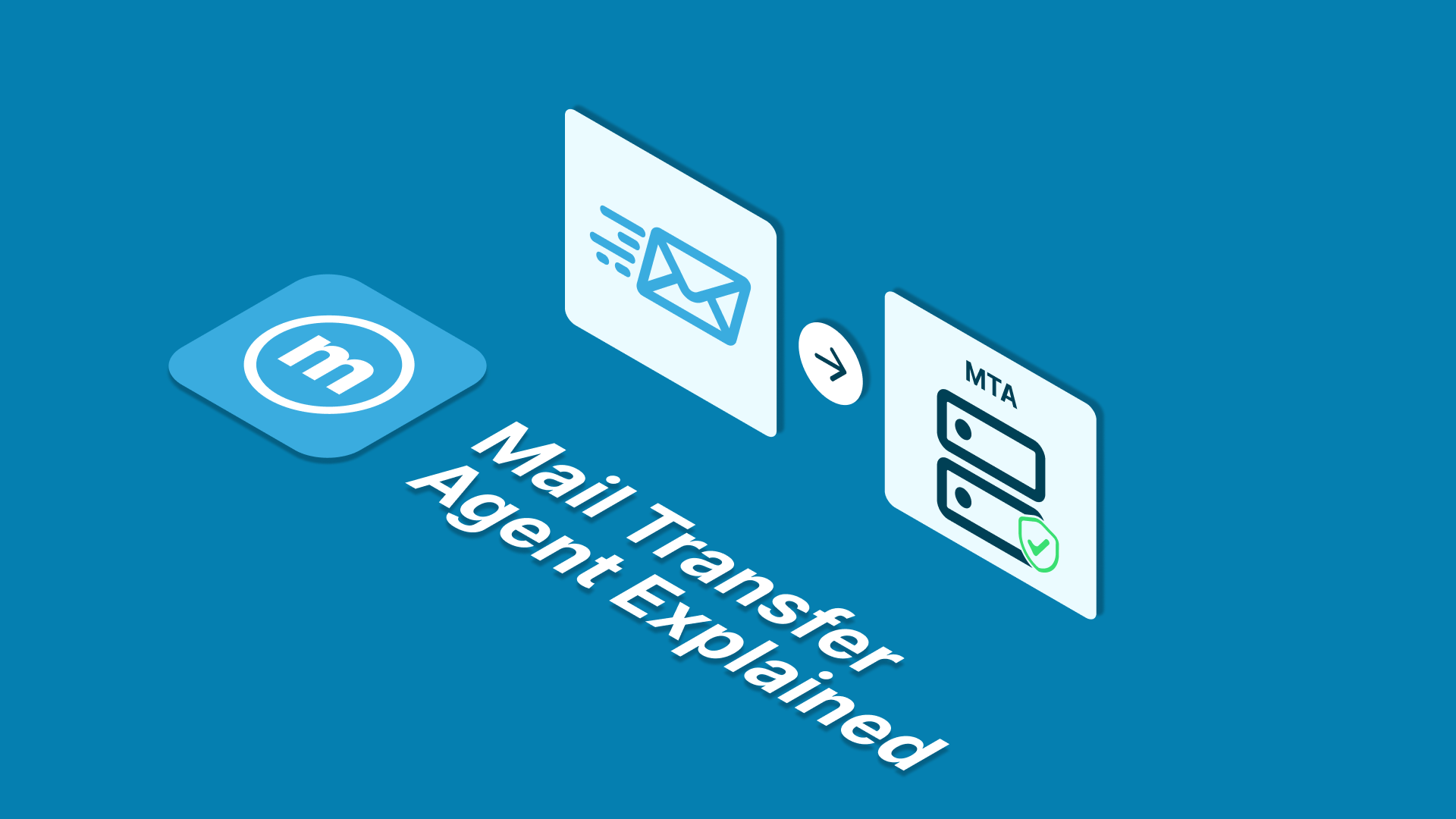Mail Transfer Agent Explained: What Is It and How It Works

Behind the scenes of every email journey is a crucial component known as the Mail Transfer Agent (MTA). This unsung hero plays a pivotal role in ensuring that your emails reach their intended destinations reliably and efficiently. In this article, we will delve into the world of Mail Transfer Agents, exploring what they are and how they work to facilitate the smooth flow of electronic mail.
Understanding the Basics
A Mail Transfer Agent, often referred to as an MTA or mail server, is a software application responsible for the transmission of emails from the sender's computer to the recipient's mailbox. It acts as the postal service of the digital world, handling the routing, relaying, and delivery of email messages across the vast network of interconnected servers. This includes several operations in the process, such as:
- Queue Management: Arranging emails in a queue or line-up until they are ready to be dispatched to the recipient's server.
- Rate Limiting: Regulating the pace at which emails are sent to prevent overwhelming the recipient's server and triggering spam markings.
- Appointment Scheduling: Determining the optimal timing for sending emails based on factors such as the recipient's time zone.
- Connection Administration: Supervising the initiation, upkeep, and termination of network connections utilized for email transmission.
- Data Transfer: Transmitting the actual email data, including content and attachments, from one point to another across the network.
- Dealing with Delivery Delays: Addressing temporary obstacles in email delivery, such as a busy or temporarily inactive recipient's server.
- Generating Delivery Failure Notifications: Creating and dispatching bounce messages to the sender when emails cannot be successfully delivered.
- Monitoring Delivery Status: Observing and documenting the status of each sent email, whether it has been delivered, is still in the queue, bounced, or deferred.
If your business frequently engages in activities that require email communication, such as transactional emails or email marketing, employing a dedicated Mail Transfer Agent (MTA) for handling substantial email volumes is advisable. This approach enhances your ability to effectively reach potential customers.
Interested in experimenting with email outreach to boost sales? Consider exploring our email API service.
The Main Elements in the Email Delivery Process
Message Submission Agent (MSA): The email journey begins with the sender using an email client to compose and send a message. The MSA is the component responsible for accepting these outgoing messages and preparing them for further processing by the MTA.
Mail Transfer Agent (MTA): The MTA is the core element of the email delivery process. It receives outgoing messages from the MSA and initiates the process of routing and relaying the email to its destination. MTAs utilize various protocols, such as Simple Mail Transfer Protocol (SMTP), to communicate with each other and transfer messages between servers.
Mail Delivery Agent (MDA): Once the MTA has successfully relayed the email to the recipient's mail server, the MDA takes over. It is responsible for delivering the message to the recipient's mailbox, where it can be accessed by the recipient's email client.
How Mail Transfer Agents Work
Initiating the Email Journey
The sender initiates the email process by composing a message using an email client and submitting it to the Message Submission Agent (MSA). The MSA formats the message and passes it on to the Mail Transfer Agent (MTA).
Address Resolution
The MTA uses the recipient's email address to determine the destination mail server. This involves querying the Domain Name System (DNS) to obtain the mail server's IP address associated with the recipient's domain.
SMTP Communication
The MTA of the sender establishes a connection with the recipient's mail server using the Simple Mail Transfer Protocol (SMTP). SMTP is a set of rules that govern the communication between mail servers, ensuring the secure and reliable transfer of email messages.
Relaying and Routing
The sender's MTA relays the email to the recipient's mail server. If the recipient's server is not directly reachable, the email may be relayed through multiple intermediate servers until it reaches its destination. Each intermediate server involved in the relay process is known as a Mail Transfer Agent.
Mail Delivery Agent (MDA) Processing
Upon reaching the recipient's mail server, the MDA takes charge of delivering the email to the recipient's mailbox. This involves storing the message in the appropriate mailbox directory, ready for retrieval by the recipient.
Recipient Access
The recipient can access the delivered email using an email client connected to the recipient's mail server. The email client communicates with the server using protocols like Post Office Protocol (POP) or Internet Message Access Protocol (IMAP) to retrieve and display the received messages.
Challenges and Security Considerations
While MTAs are fundamental to the email infrastructure, they face various challenges, including spam, phishing, and other security threats. MTAs often implement security measures such as authentication protocols, encryption, and spam filtering to mitigate these risks and ensure the integrity and confidentiality of email communication.
Moreover, the growing complexity of email systems and the sheer volume of messages exchanged daily have led to the development of advanced MTA features, including queue management, delivery status notifications, and support for multimedia content.
Tips on Choosing the Right MTA for Your Business
Choosing the right Mail Transfer Agent (MTA) is crucial for smooth email communication in your organization. With various options available, here are some simple tips to help you pick the best MTA for your needs:
Compatibility
Make sure the MTA works well with your existing email platform. Compatibility issues can lead to problems, so check if it aligns with your infrastructure.
Scalability
Choose an MTA that can grow with your organization. It should handle more emails and users as your company expands without slowing down.
Reliability and Performance
Look for an MTA with a good reputation for being reliable and fast. Check reviews and case studies to see how other organizations have experienced its performance.
Security Features
Prioritize security features like encryption, authentication, and spam filtering. These protect your emails from malicious activities and keep your communication safe.
Ease of Administration
Opt for an MTA with user-friendly tools for easy management. A web-based interface, good documentation, and centralized management features can simplify tasks.
Compliance with Standards
Ensure the MTA follows industry standards like SMTP, IMAP, and POP. This ensures it works well with other email systems and reduces the risk of communication problems.
Support for Multiple Platforms
If your organization uses various operating systems and email clients, choose an MTA that supports multiple platforms. This flexibility ensures smooth communication across different environments.
Integration with Other Software
Consider how well the MTA integrates with other tools your organization uses. Integration with collaboration tools, directory services, and backup solutions can make your email system more efficient.
Monitoring and Reporting Capabilities
Pick an MTA with good monitoring and reporting features. Real-time analytics, logging, and alerting can help you quickly identify and solve any issues.
Community and Support
Check for a strong support system or community. A responsive support team or an active user community can be helpful when you run into issues or need help with configuration.
Cost Considerations
Evaluate the total cost of ownership, including licensing fees and maintenance costs. Make sure the MTA fits your budget and won't lead to unexpected expenses.
Future Development and Updates
Look into the MTA's development plans and update frequency. Regular updates show that the MTA is actively maintained and improved, ensuring it stays reliable in the long run.
Knowing how MTAs work reveals the strong foundation supporting our daily emails, emphasizing the crucial role they play in email communication. By considering these factors, you can wisely choose an MTA that suits your organization's needs, ensuring dependable and secure email communication.
Don't hesitate to visit our blog for other interesting information. You can also register here to try our Email API Sandbox! We can help you if you feel like integrating email API to your business.
(N.A)

